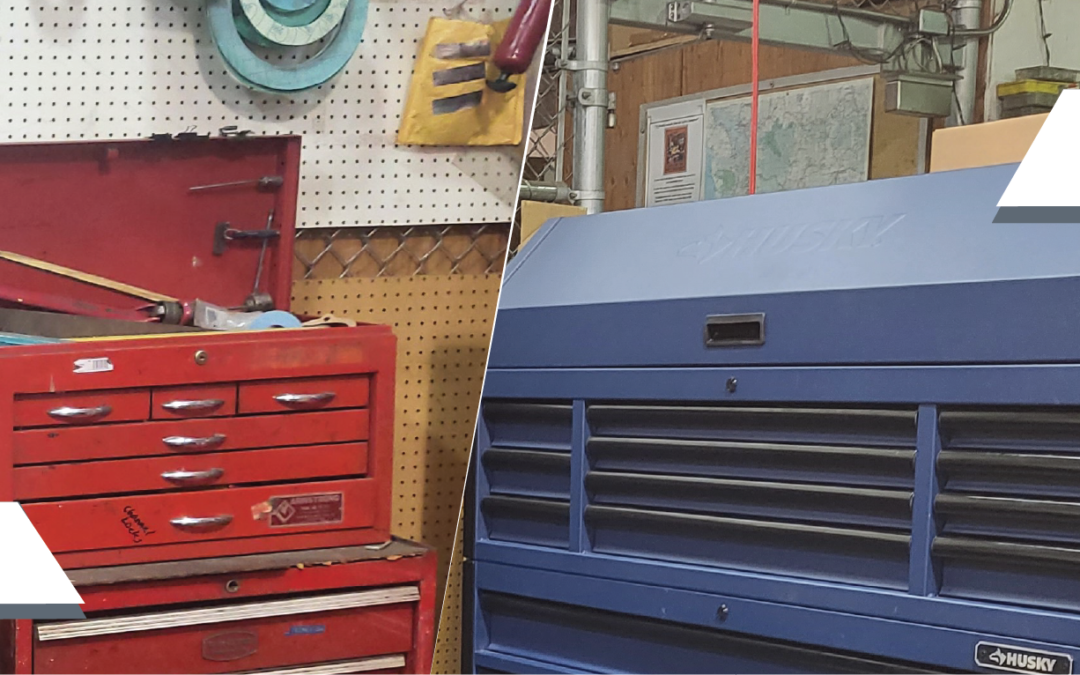
Dec 5, 2022 | Industrial, Services
Over the last few months, our Industrial service team has been working on revitalizing the Portland branch’s in-house pump shop. The end goal of this project is to build the most respected industrial pump repair shop in the country. Northwest Pump is committed to servicing your industrial equipment needs, and now we will expand our capabilities even further.
Learning from the best
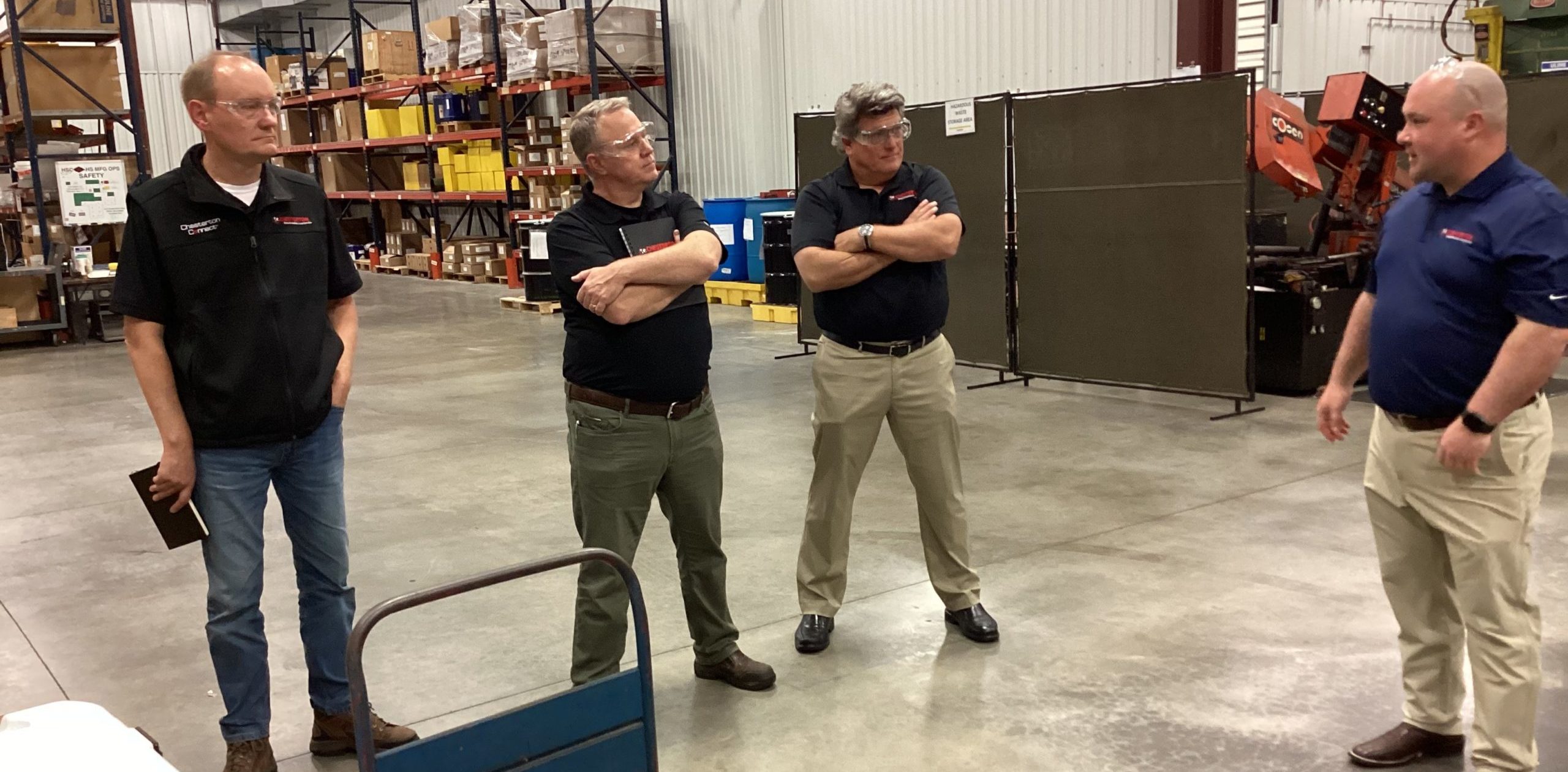
Our team realized the best way to start this journey was to look at other renowned pump shops across the United States to compare what they have, to where we want to be. With help from A.W. Chesterton, the team was able to visit pump fabrication facilities in the south-eastern US. This helped us know not only the type of equipment they utilize, but also the layout of the shop as well as the technical know-how our team needed to consider.
What to expect from the new pump shop
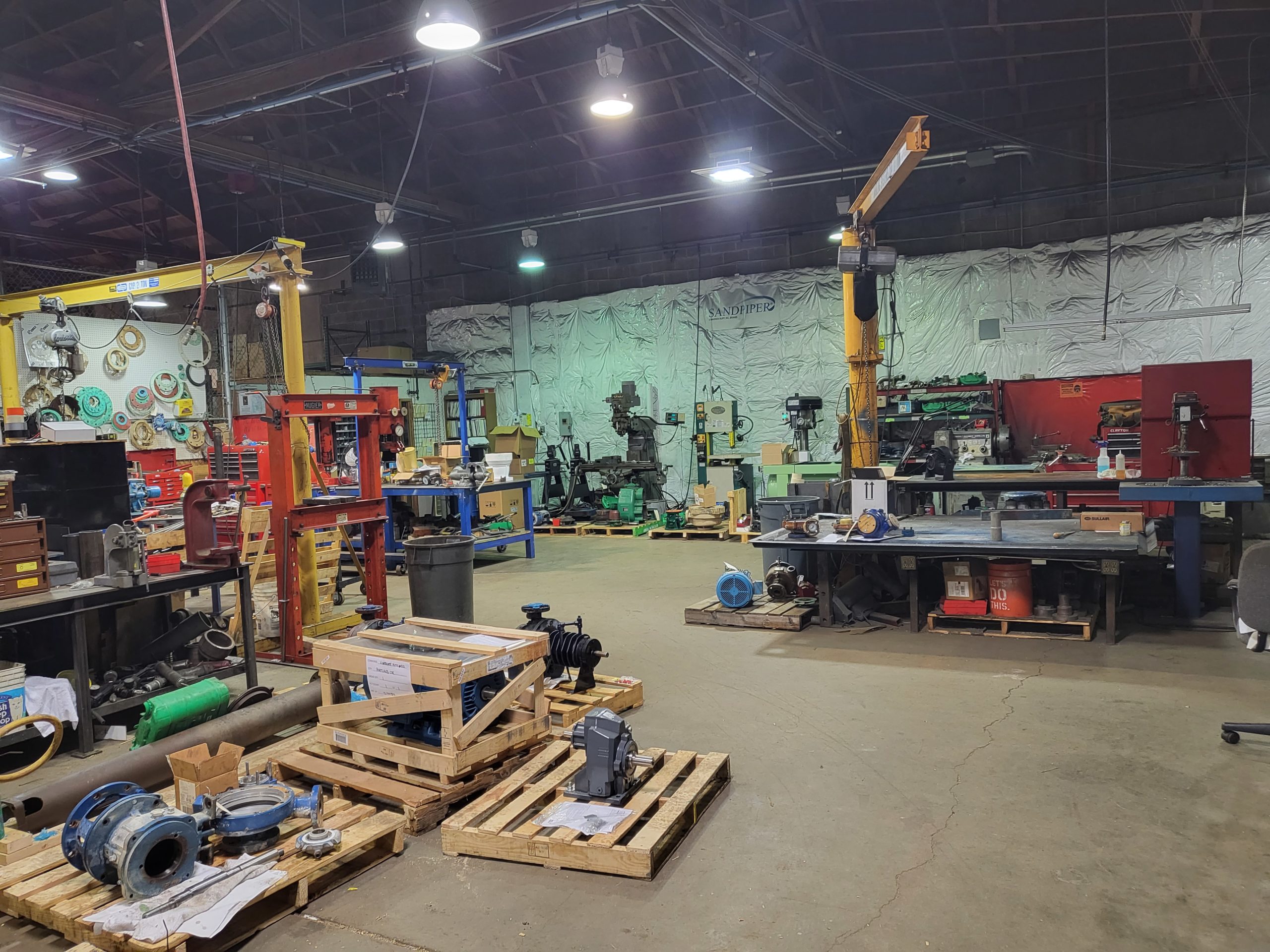
When the renovations are finished, Northwest Pumps’ repair shop will be assembling pump packages in-house. The packages will have Chesterton seals or packing as needed and be engineered with customer need first. We will also be able to increase production in compressor packages manufactured in-house as well.
In addition to assemblies, the shop will add an inside overhead crane to expand our capabilities when working with larger turbine pumps. The shop is also upgrading its dynamic balancer for more precise insights on the balance of the impellers that we work with.

What is new?
 In the time since the trip, our shop has upgraded its tool boxes for increased capacity & ease of use. Those visiting our Portland branch for any will calls should notice the warehouse now starting to make space for upcoming pump assemblies already. As we begin the process of updating the shop, we expect no impacts to repair times.
In the time since the trip, our shop has upgraded its tool boxes for increased capacity & ease of use. Those visiting our Portland branch for any will calls should notice the warehouse now starting to make space for upcoming pump assemblies already. As we begin the process of updating the shop, we expect no impacts to repair times.
Next Steps
Stay tuned for updates through social media or sign up for our service newsletter to receive them monthly below.
Looking for maintenance on your industrial pumps? Request an appointment here.
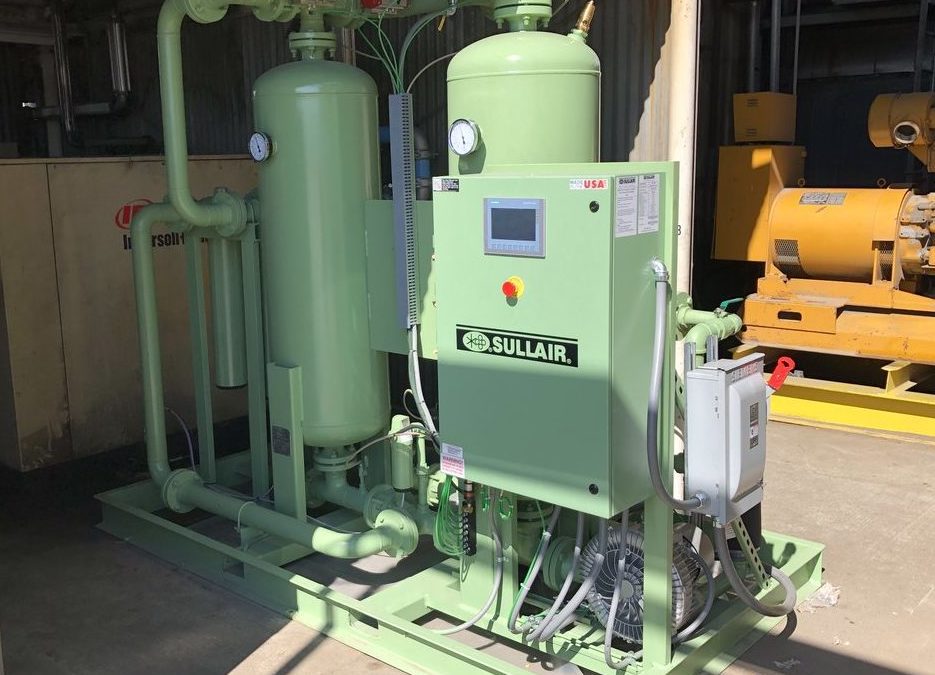
Nov 16, 2022 | Industrial
When investing in air compressors for your facility, it is also important to consider what other accessories might be needed along with the compressor & the piping. One of the more common accessories- especially in the Pacific Northwest- is an air dryer. Northwest Pump offers desiccant & refrigerated air dryers through Sullair and the other air compressor vendors that partner with Northwest Pump. The difference between all the variations of dryers depend on the way they remove moisture. Here are a few points to consider when looking for a compressed air dryer for your system.
Why use a compressed air dryer?
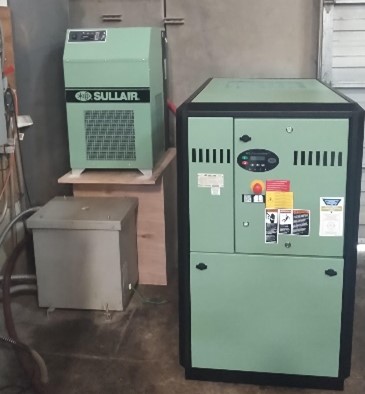 Facilities use dryers of either style to reduce the moisture in the compressed air. Excess moisture can cause problems for the equipment using the compressed air. Depending on the intended use, this moisture could also damage the end-product, reducing its quality or requiring it to be thrown out entirely.
Facilities use dryers of either style to reduce the moisture in the compressed air. Excess moisture can cause problems for the equipment using the compressed air. Depending on the intended use, this moisture could also damage the end-product, reducing its quality or requiring it to be thrown out entirely.
Refrigerated Dryers
Refrigerated dryers work much like a refrigerator in a kitchen does. These dryers reduce the temperature for the compressed air to approximately 35°F, causing the moisture mixed with the air to turn to condensate. The condensate is then stored within the dryer until it gets drained. The dry air then passes through a heat exchanger to be warmed back up before exiting the dryer.
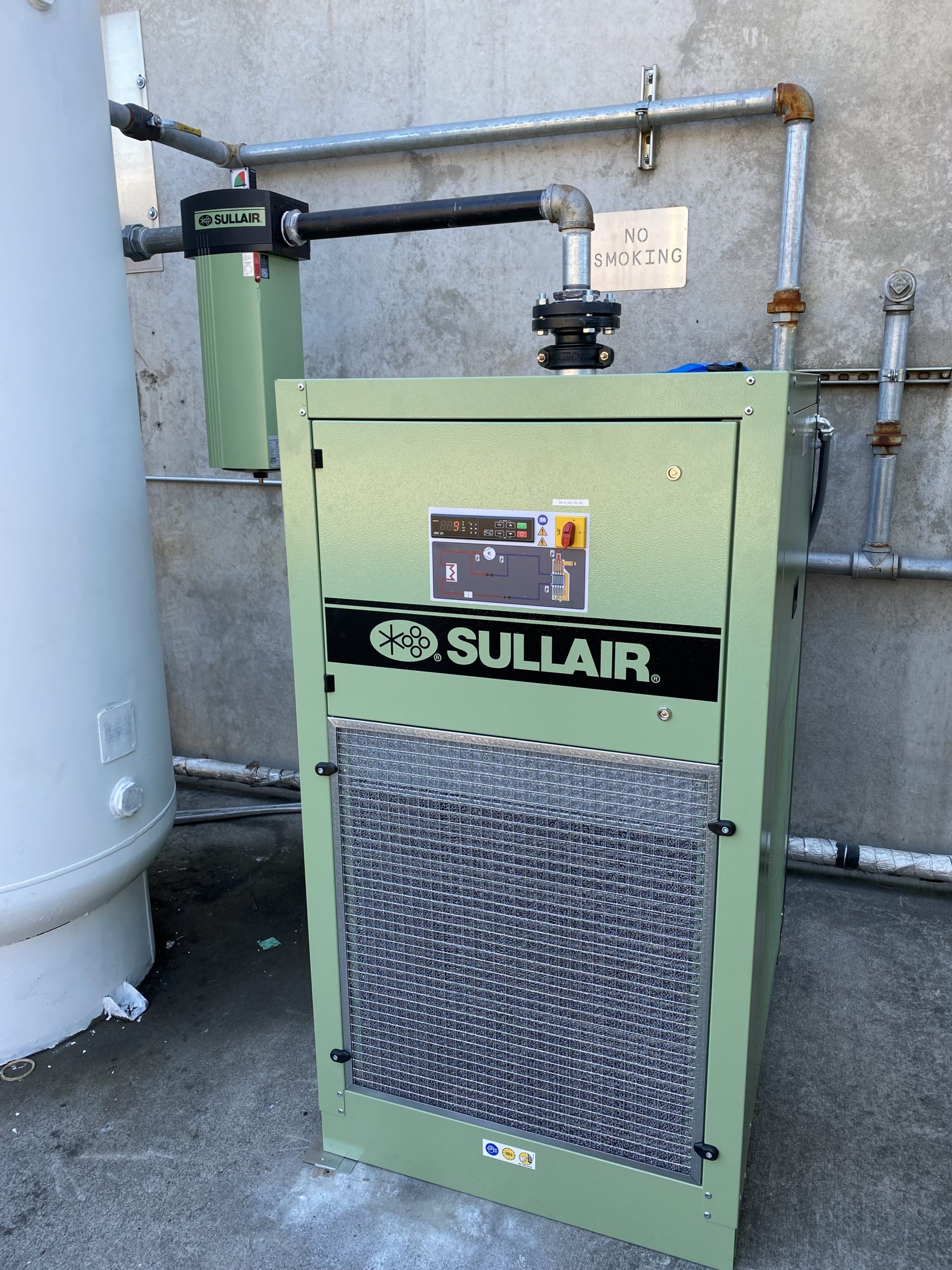 There are several advantages facilities with refrigerated dryers can expect. First, they tend to be a cheaper investment than other kinds of compressed air dryers. Refrigerated dryers also typically have reduced maintenance costs. However, the cost to operate a refrigerated dryer will vary drastically depending on the ambient temperature around the dryer itself.
There are several advantages facilities with refrigerated dryers can expect. First, they tend to be a cheaper investment than other kinds of compressed air dryers. Refrigerated dryers also typically have reduced maintenance costs. However, the cost to operate a refrigerated dryer will vary drastically depending on the ambient temperature around the dryer itself.
Facilities where winter temperatures drop to below freezing should expect to see an increase in costs when using a refrigerated dryer during the winter months. That is because the dewpoint, the point where moisture turns from a gas to a liquid, of the dryer is now higher than the temperature outside. For these reasons, refrigerated dryers are not suitable for installation in areas where temperatures reach 35°F or below. Even if the dryer is installed in a climate controlled area, if the compressed air system’s piping goes outside or is exposed to freezing temperatures, then water will condense in the lines. In this scenario, a desiccant dryer would be needed.
Desiccant Dryers
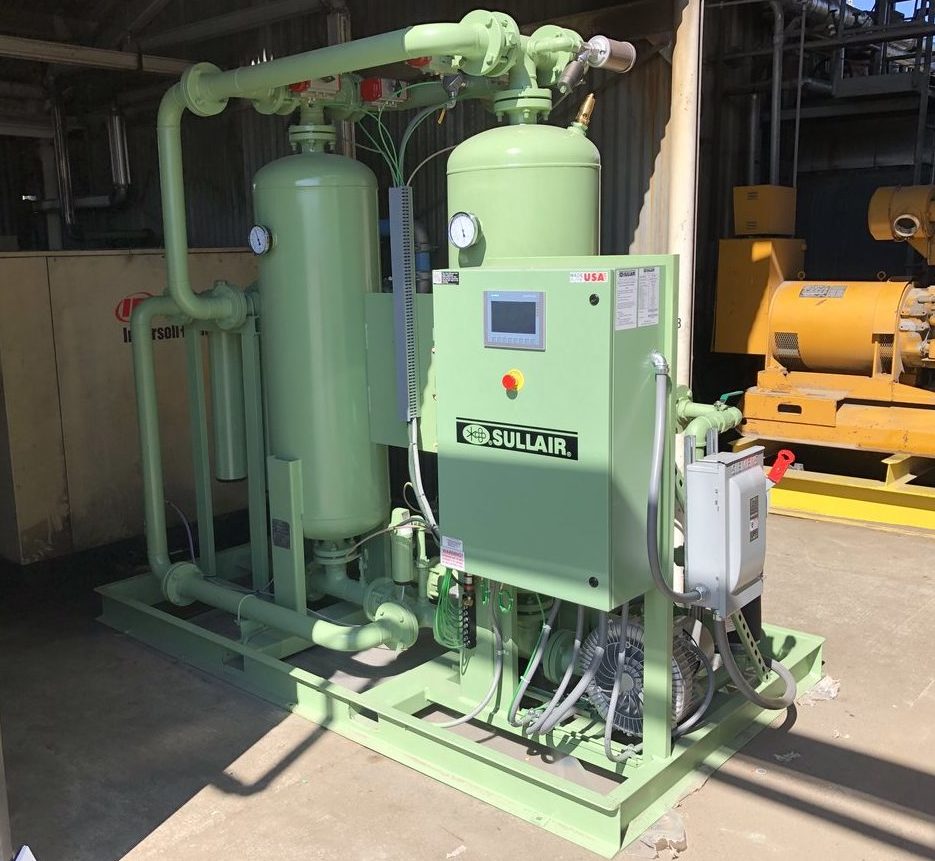
Desiccant dryers utilize two alternating towers filled with material designed to absorb the moisture in the condensed air. The air travels through a tower, removing moisture, before being sent to the plant. As one tower becomes saturated with moisture the system automatically switches towers until it ‘dries out’ then cycles back.
Desiccant dryers have several ways of maintaining the same air pressure: heatless, heated, and a heated blower purge. Heated desiccant dryers use an additional heat source to help dry the saturated desiccant, which reduces the amount of purge air needed compared to the heatless design. Heated blower purge dryers utilize an ambient air blower in addition to a heater to further reduce the amount of purge air used to achieve the desired pressure dewpoint.
Customers can expect higher initial costs when purchasing a desiccant dryer. Because this type of dryer does not rely on temperature to remove moisture, it costs less to operate annually.
Next Steps
Looking to upgrade your compressed air system? Ask our experts how Sullair’s compressors and dryers can reduce your utility bills here, by calling us at 1-800-452-PUMP, or emailing sales@nwpump.com. Looking for service for your compressors or dryers? Request service here, call us at 1-866-577-2755, or email us at service@nwpump.com.
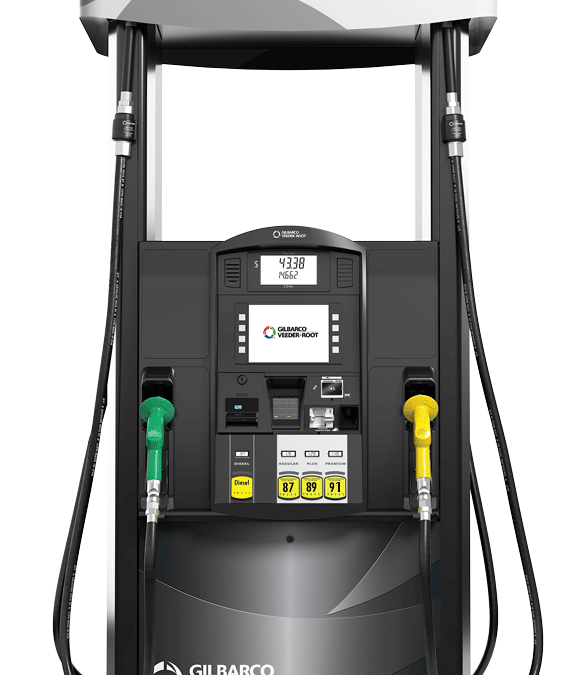
Oct 31, 2022 | Services
Secure your competitive advantage and increase profits with Gilbarco’s Encore 700 EMV Fuel Dispenser – your best dispenser investment for today and tomorrow. With a familiar ATM-style customer interface, the highly secure CRIND provides enhanced, upgradable security that supports EMV and contactless payment technologies.
Forecourt Payment and Merchandising
Encore 700 S gives you field-proven tools to inform, persuade, and motivate your fuel customers to come inside your store and buy higher-margin goods, through:
- Flexible content management options, with the industry-leading Applause® Media System
- Superior on-screen image clarity, video resolution, and video performance
- Supports mobile payment applications
- Capability to support EMV Contactless payment
- 10.4″ color screen for maximum impact
Aging Equipment Is Expensive
Parts, service, and labor costs are increasing. It’s time to invest in an asset that pays you back. Save your cash and finance EMV technology upgrades at below-market rates.
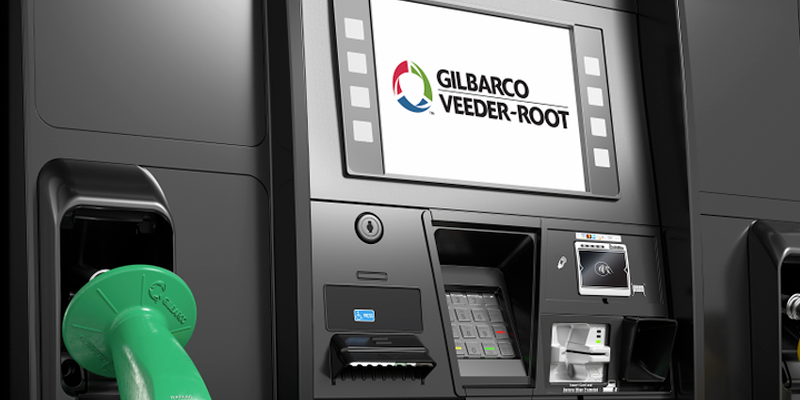
Forecourt Payment Security: FlexPay™ IV is the industry’s most secure payment platform for fuel dispensers. The FlexPay IV CRIND provides the easiest and most integrated secure payment solutions.
Forecourt Engagement: Encore 700 S gives you field-proven tools to inform, persuade, and motivate your fuel customers to come inside your store and buy higher-margin goods.
Dispenser Fueling Security: Offers customizable security options such as custom locks, door entry detection sensors, reinforced lower panels, or encrypted pulsers.
Dispenser Remote Management: Gilbarco’s cloud-based service, Insite360 Encore, allows subscribers to remotely connect to their dispensers and perform several straightforward and complex tasks.
Secure. Connected. Profitable.
The stakes have never been higher when it comes to security on the fuel island. Gilbarco’s FlexPay systems and contactless payment technology make EMV upgrades and mobile payments easier and more cost-effective.

Self-Managed Media To Drive Forecourt Engagement
Boost your business and drive fueling customers inside your store with valuable solutions that enhance your digital strategy on the forecourt. Encore’s media solutions engage your customers at the pump, improve brand loyalty, and increase your bottom line.
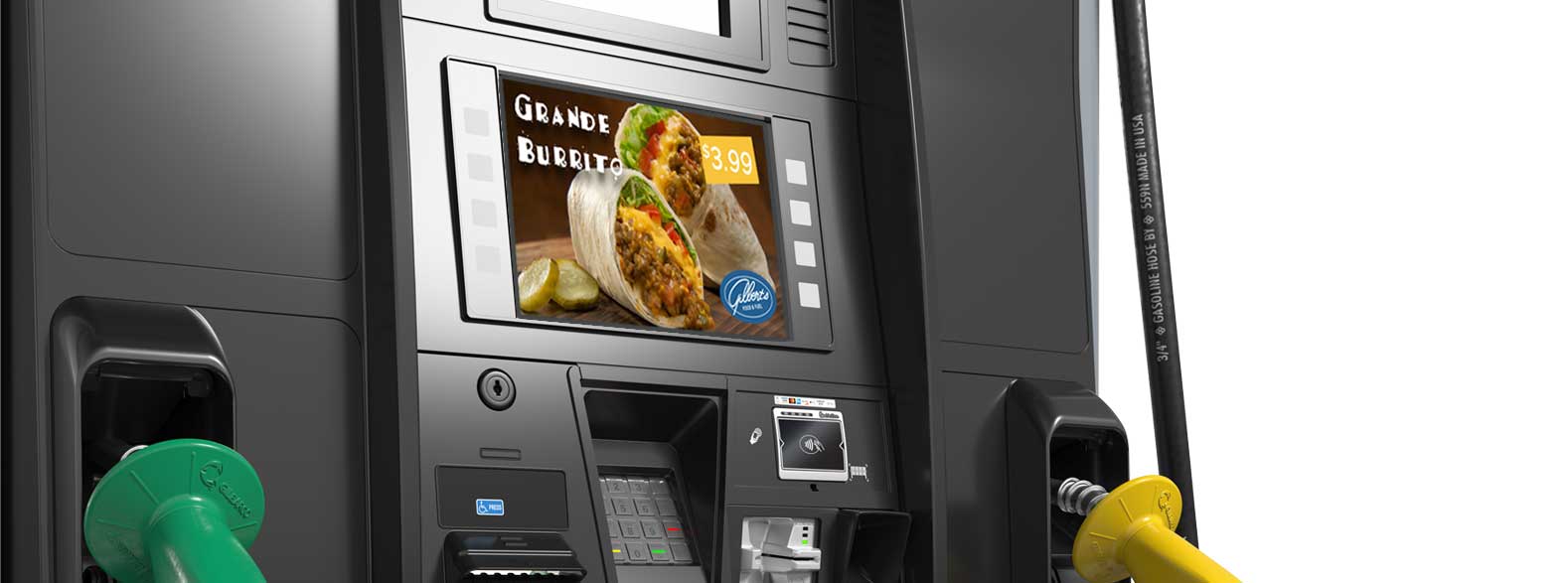
Next Steps
It’s time to enhance customer engagement and scale your digital transformation with robust loyalty and content management options. Learn more about the Encore 700 EMV Fuel Dispenser by contacting sales@npwump.com, calling 1-800-452-PUMP, or finding your nearest location here.
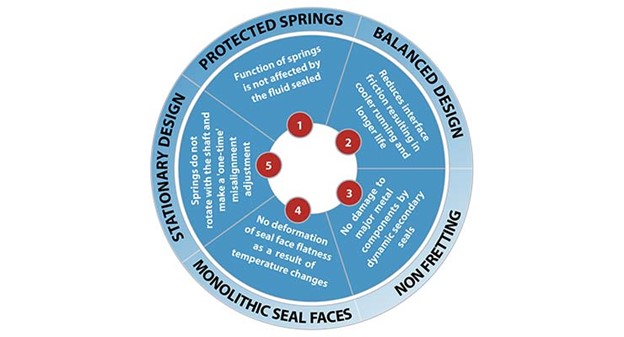
Oct 11, 2022 | Industrial, Services

A crucial step in preventative maintenance in pumps is finding and using the correct seal for the job. Mechanical seals are used to seal the rotating shaft in pumps and other equipment. With so many mechanical seal designs on the market, it can be difficult to identify which kinds to use. A.W. Chesterton Company’s mechanical seal design utilizes 5 design principles to maximize its sealing capabilities. These principles have been refined by Chesterton since the company brought its first mechanical seal to market in 1970. After all the lessons learned from successes and failures, they have determined the Five Key Features that a mechanical seal should have to reduce unplanned maintenance and downtime. To provide the greatest mean time between failures (MTBF) and avoid downtime, they utilize these five design principles in their sealing devices.
Protected Springs
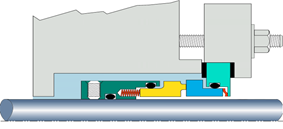
Spring protected from fluids | Image provided by A.W. Chesterton Company
Typically, within early mechanical seal designs, the springs were submerged within the fluid. However, this can lead to trouble when fluids with dirt or other contaminates interact with the springs. When the contaminates collect within the spring, it cannot correctly maintain the alignment necessary for a complete seal. Chesterton’s mechanical seal design protects the springs within the mechanical seal from the fluids being pumped.
Balanced Design
The second design feature and open secret of Chesterton’s mechanical seal design is balance. On the mechanical seal, there are two main sides, the fluid side, and the atmospheric side. To prevent moisture from leaking out of the seal, both sides put equal pressure on each other to trap the fluid. Many seals will often see that the fluid side exerts greater pressure than the atmospheric side. Not only does this reduce the quality of the seal, but it can also ruin the pump with time. Balanced seals reduce the seal ring area on which the hydraulic pressure of the liquid in the pump acts. This allows for better lubrication that results in lower heat generation, face wear, and power consumption. Balanced seals will generally have higher pressure ratings than unbalanced seals.
Non-fretting
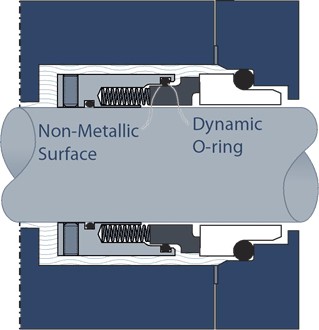
Non-Fretting Seal | Image provided by A.W. Chesterton Company
Fretting on a pump shaft refers to the way that a material is worn away on a shaft by an elastomeric material. An example may be a 316 stainless steel shaft sleeve that is damaged by a Viton O-ring. Stainless steel protects a shaft from corrosion by forming a chrome oxide layer on the surface. The dynamic O-ring wears that protective surface away and it then reforms. Over time the chrome oxide gets imbedded into the O-ring and works like sandpaper removing even more material. The result is a groove worn into your expensive sleeve and a leaking mechanical seal. Chesterton seals utilize designs that have any dynamic O-rings operating against a non-metallic surface, usually the sacrificial face.
Additionally, some manufacturers offer seals that are self-fretting, rather than shaft-fretting. What this means is that these seals do not fret or damage the shaft, they harm seal itself. While this protects the pumps, the O-rings still work against metal, reducing the lifespan of the seal itself.
Monolithic Seal Faces

Inserted vs Monolithic Seal Face | Image provided by A.W. Chesterton Company
Some mechanical seal designs utilize an inserted seal face, typically made of carbon or graphite inserted into a metal holder. However, the disadvantage to this technique is these non-metallic materials often react to heat differently than the metal of the seal. The result is the face of the seal is easily deformed- leading to leaks and early replacement of the seal. Proper mechanical seal design uses monolithic seal faces without using a holder and inserted face. By using Finite Element Analysis (computer modeling), Chesterton’s monolithic seal face designs are made more efficiently than ever.
Stationary Design

Rotary vs Stationary Seals | Image provided by A.W. Chesterton Company
Mechanical seals can either use rotating or stationary springs. With rotary mechanical seals, it is important that the stuffing box face is perpendicular to the shaft for the faces to stay closed. There will always be some resulting misalignment from installation and parts tolerances so this alignment cannot be assured. To compensate for the misalignment, the springs must adjust each time the shaft rotates to keep the seal faces closed. At motor speeds this adjustment happens thousands of times per minute (for 1800 rpm, 3600 adjustments occur) which is not only difficult to accomplish, the springs will fatigue and fail causing seal failure. Rotary seals are simple in design which makes them inexpensive
In contrast, a stationary seal is designed in such a way that the springs do not rotate with the pump shaft; they remain stationary. Because the springs do not rotate, they are unaffected by the rotation of the shaft or how fast the shaft rotates. The springs do not need to correct or adjust with each rotation; they adjust for misalignment only once when installed. Chesterton uses this as the fifth design requirement, and this provides greater life to their mechanical seals.
Chesterton 1510L in Action
Using these five design principles, Chesterton has updated its 150 seals to the new 1510 seal. The new design uses a monolithic seal face and changes where the dynamic O-rings are placed to be a non-fretting seal. Chesterton unveiled this updated seal in the US in September of 2022. However, Chesterton also has one additional add-on for this new seal. Starting at the end of October 2022, Chesterton will be releasing the 1510L. The 1510L has all the same design capabilities of the 1510, the difference between the two is the installation process. The 1510L utilizes a lock ring mechanism to simplify installation requiring the installer to tighten only one screw to connect the seal to the shaft.
Next Steps
To request a demonstration for the 1510L mechanical seal, click here. Learn more about Northwest Pump’s mechanical seals by contacting us here, emailing us at sales@nwpump.com, or by calling 1-800-452-PUMP.
For service on your mechanical seals by our Chesterton certified pump technicians, contact us here, email us at service@nwpump.com, or call 1-866-577-2755.
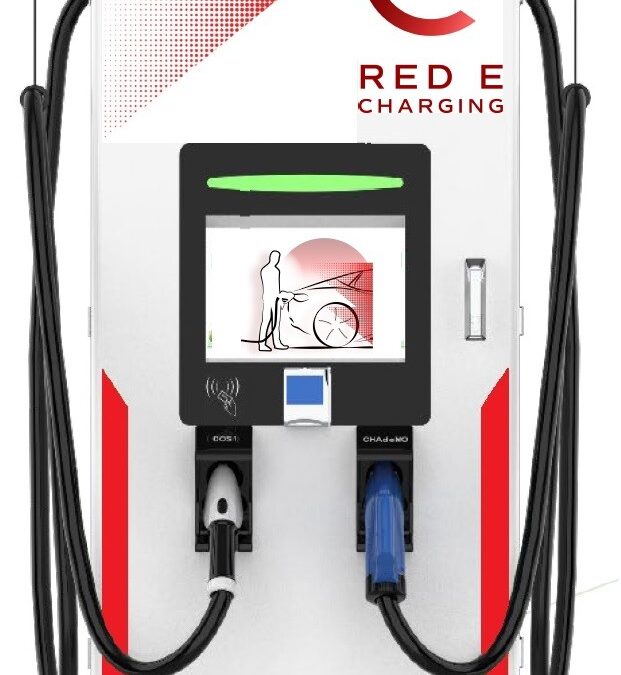
Oct 6, 2022 | Petroleum
Red E is an EV charging network designed to make charging easy and available when you need it, where you need it. Red E offers a full line of both L2 and DCFC products to meet the needs of any project, big or small. With chargers ranging in speed from 10-400kW, Red E has systems in every style and configuration available to ensure you have the best equipment for your application.
Types of Chargers
Level 2 Chargers:
Whether for your home, workplace, or retail location, Red E has the right EV chargers to get you back on the road.
RED E WAKLLBOX HOME, RED E JUICEBOX HOME, RED E JUICEBOX PRO 40A, RED E WALLBOX PRO48, RED E WALLBOX PEDESTAL
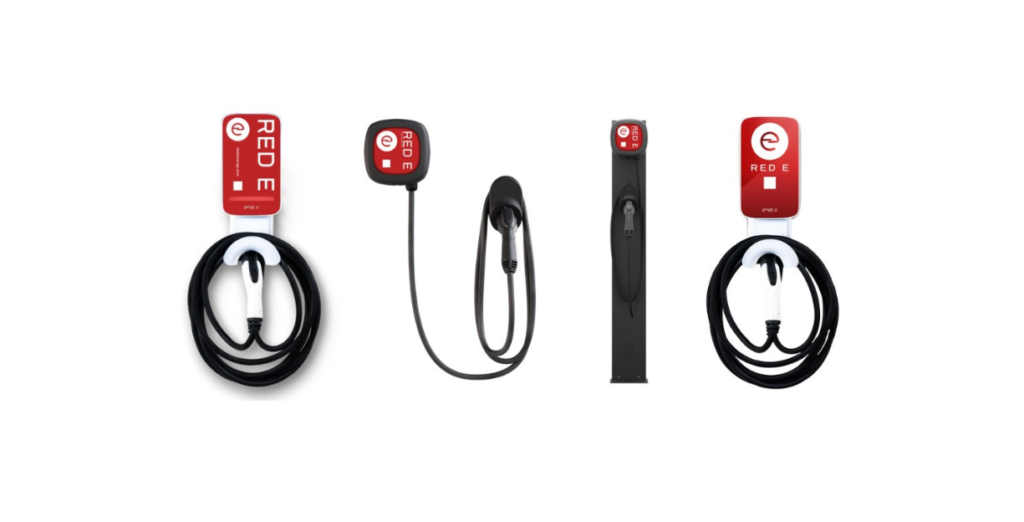
DC Fast Chargers:
From 40-480kW Red E offers every configuration of DC Fast Charger available at best-in-class pricing and minimal lead times.
RTM 50kW, TPG-60-360kW, BOOST 150-200kW, BTC 100-200kW, Maxi 120-240kW
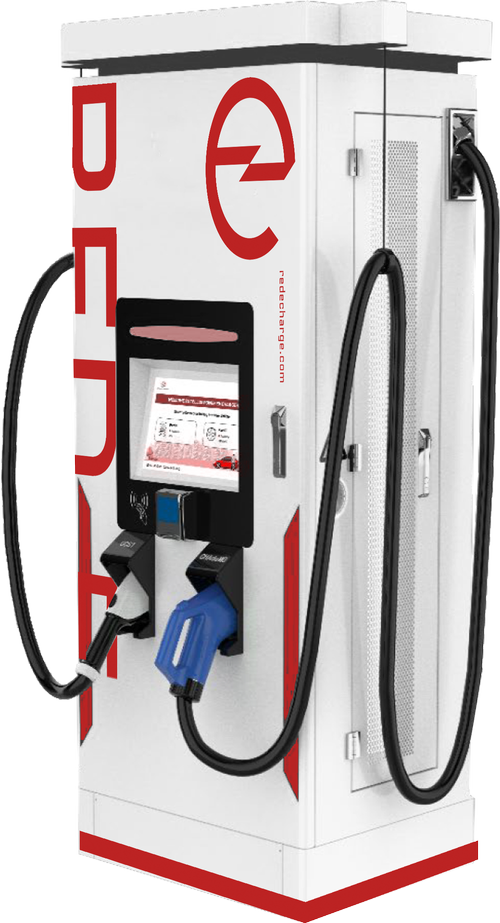
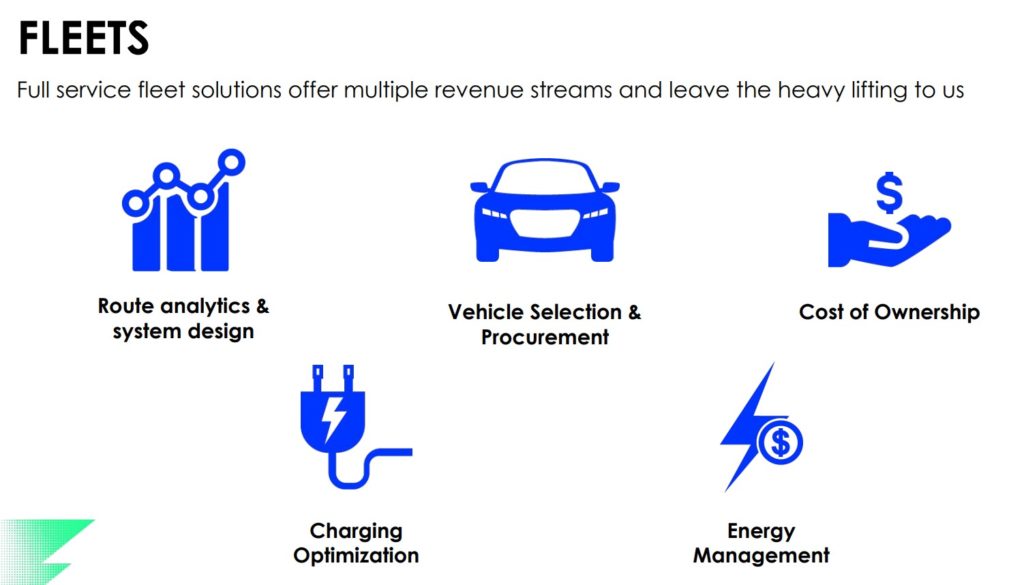
Highlights:
Easy to use – Charging should be easy. Anyone can use any Red E site by simply just scanning the QR code or swiping a card.
Easy to find – Available on all apps, maps, and in car navigations, you can easily find a Red E station near you.
Conveniently located – Red E works with partners nationwide to select sites where you need them. Whether next to your favorite restaurants downtown or right off the highway on your road trip, they prioritize quality locations over quantity.
Straightforward pricing – No hidden costs, no complicated time based fees, all chargers are set to competitive, straight forward $/kWh pricing so you can predict your charge.
24/7 driver support – They have a team of experts that are on call day and night to help get you back on the road.
With sales support, Red E doesn’t just sell chargers, they offer solutions to ensure every project is a successful one. They have developed a system to quickly and efficiently turn a lead into a sold completed job.
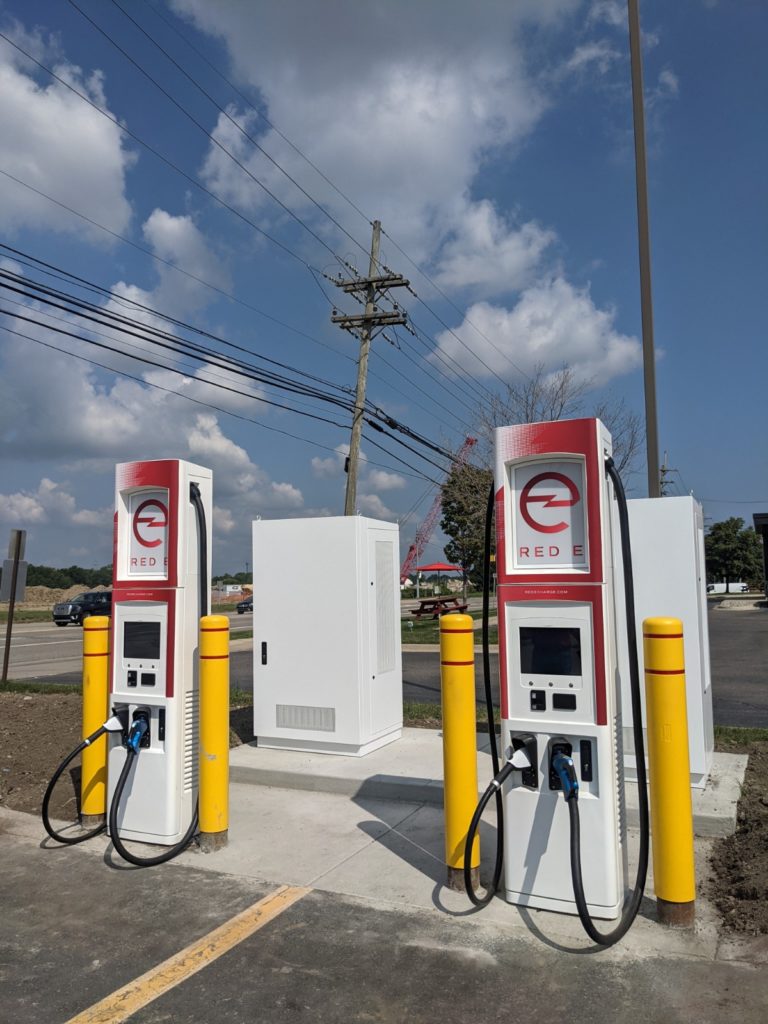
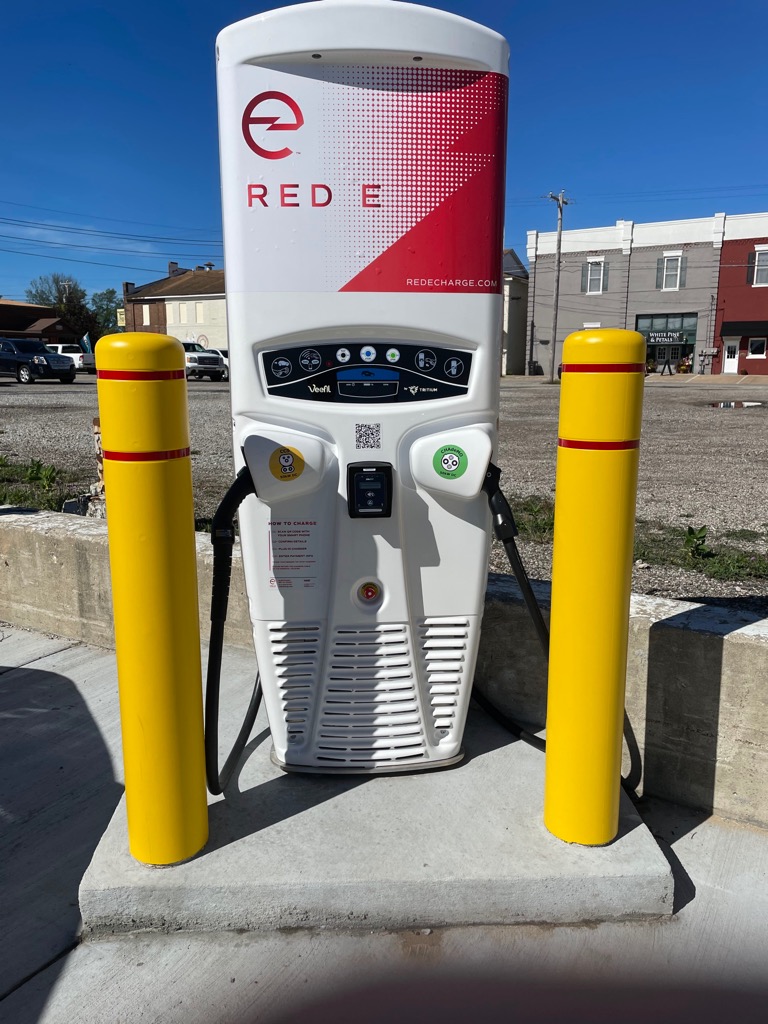
Next Steps
Join the Red E network and bring fast and reliable EV charging to your business or community members. Reach out to our sales team sales@nwpump.com for more details, call 1-800-452-PUMP or find your nearest location here.
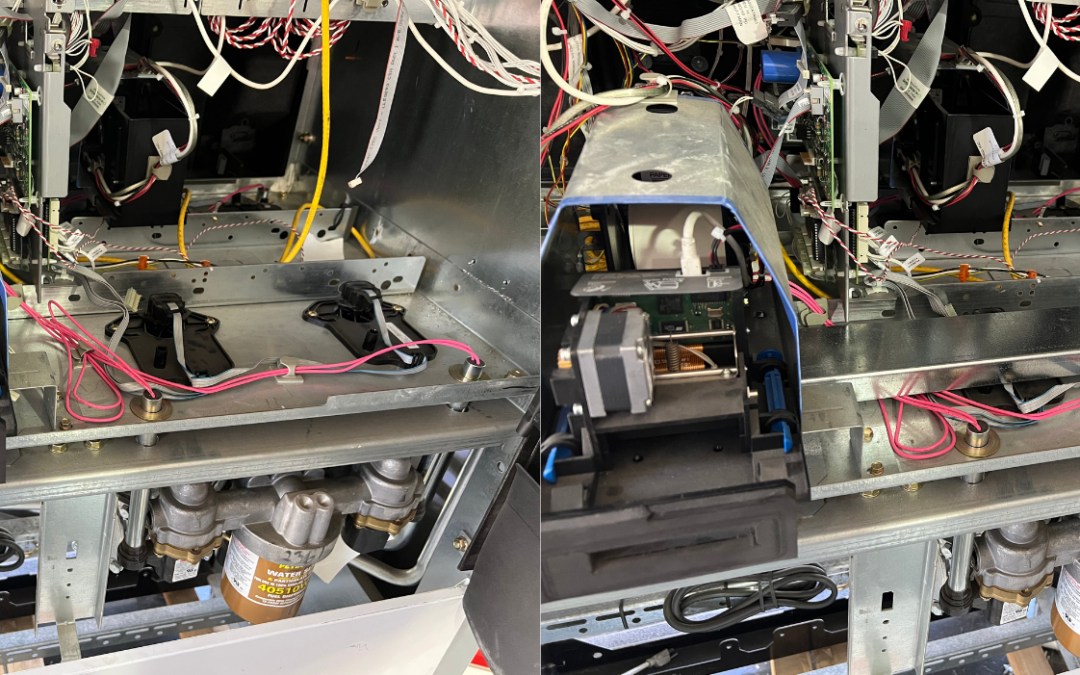
Sep 13, 2022 | Petroleum
In recent months, gas prices in the U.S. have surged to record highs, causing more people to attempt to steal fuel. Thieves are getting more and more bold, sophisticated, and aggressive. Therefore, we are encouraging our customers to develop a security plan to help prevent fraud. No single solution will completely prevent attacks, but careful procedures can significantly reduce the opportunity.
According to motorbiscuit.com, “Mostly, gas thieves were able, on occasion, to steal around $50-60 worth of fuel. But as the price of gasoline and diesel fuel have risen in such huge leaps, it is becoming a more desirable commodity. That means there is a vast market for it, regardless of how it was obtained. The majority of convenience stores that sell fuel; Shell, Exxon, Mobil, and Chevron have the most stations in the U.S. In most cases, cashiers or store employees are involved in the theft.” Taylor, T. “Thieves Are Stealing Thousands of Gallons of Gas: Here’s How They Do It”, April 11, 2022, accessed September 1, 2022, Thieves Are Stealing Thousands of Gallons of Gas: Here’s How They Do It (motorbiscuit.com)
How to Prevent Fuel Theft
Encore 700 Pulser security cover kit protects against gas theft at the pump. The Encore 700 Pulser Security kits include:
- 2ea covers
- 8ea star drive with pin security pan head self-driving screws
- One kit is needed per dispenser
This should be a good solution for the pulser tampering that has been happening.

Next Steps
Do you want to stop fuel tank theft from your dispensers? Northwest Pump has the solution to get you covered. Protect your dispenser by purchasing one today so your dispenser can’t be broken into! Reach out to our sales team by emailing us at sales@nwpump.com, or call 1-800-452-PUMP to get started.
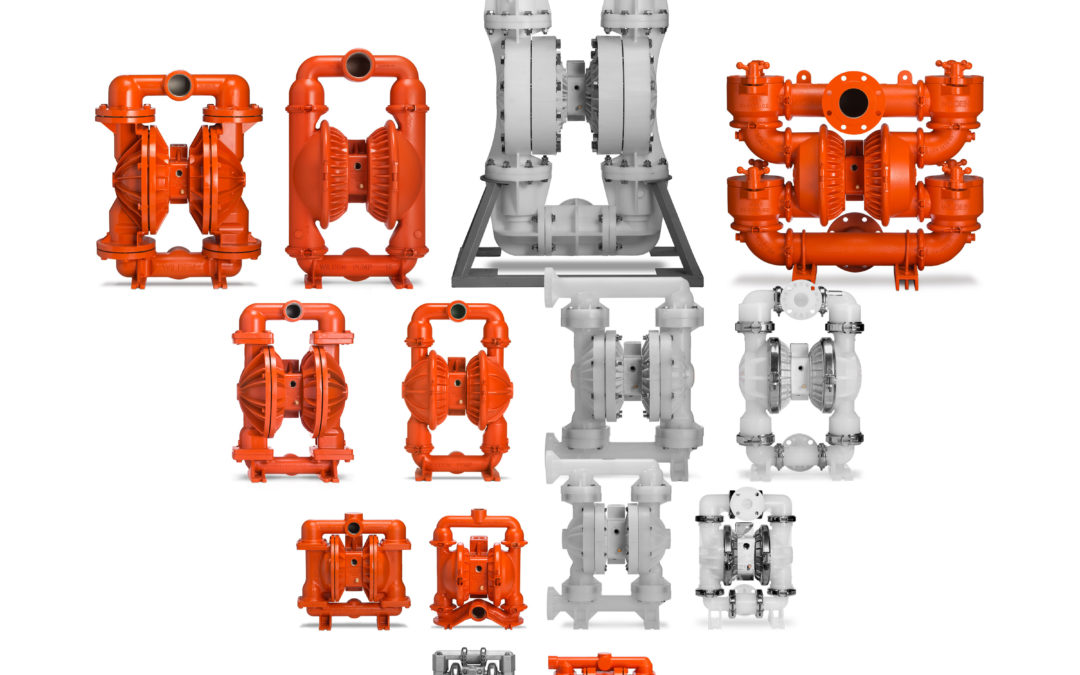
Sep 1, 2022 | Industrial
Sometimes, reliable solutions come in simple designs. So, why is it that for almost 70 years when people look at air-operated double-diaphragm (AODD) pumps they continue to ask about Wilden? Wilden sets its reliable AODD pump apart in five distinct ways: the variety of sizes & assembly styles, materials making up the pump, the number of parts used, the flow capacity, and the annual cost of ownership. Here is what makes Wilden stand out from its competition in providing reliable AODD pumps.
Number of Parts
Wilden offers its AODD pumps with as few parts as possible. This design creates a reliable AODD pump in a straightforward philosophy: less parts means less broken parts down the line. To showcase this, we can compare Wilden and its competitors. If we use a Wilden 2” Pro-Flo SHIFT Bolted Aluminum pump (referred to as a PS820) below, here is how many parts it has compared to the closest product from other AODD pump brands.
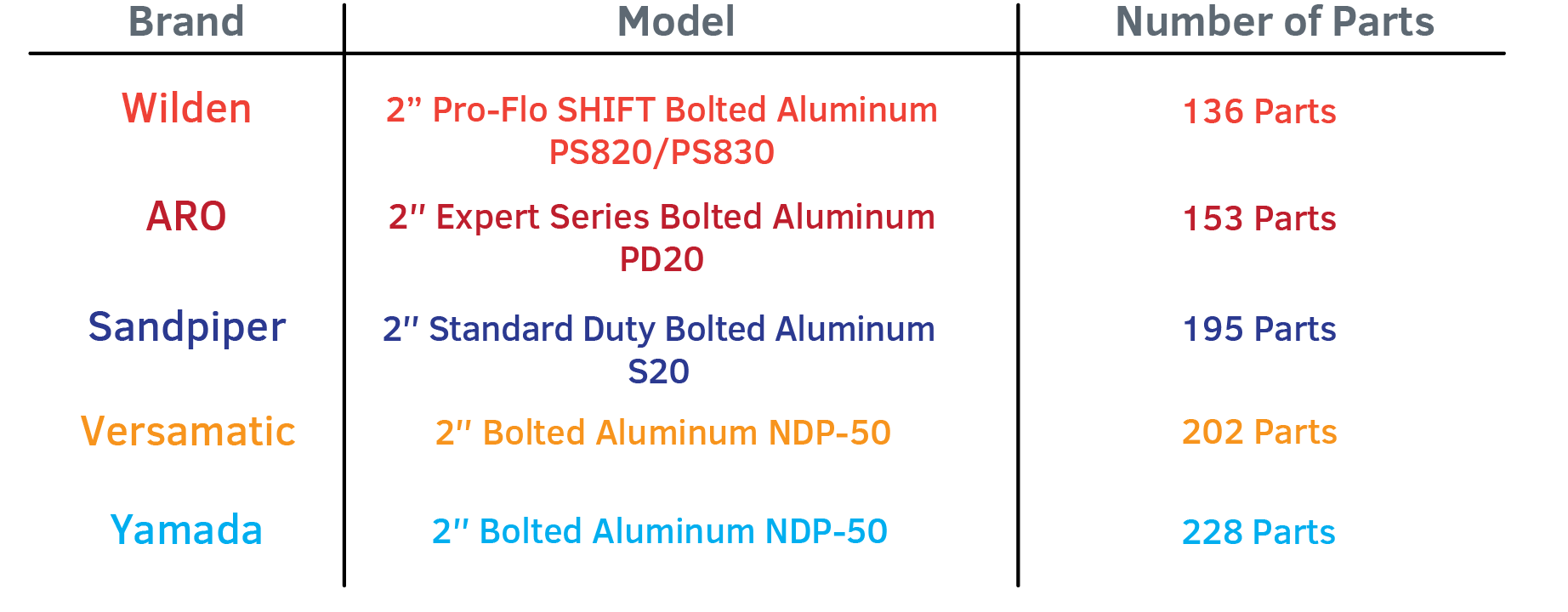
Data provided by PSG, a Dover Company
The PS820 has twenty parts less than ARO’s closest comparison. With twenty less parts, means twenty less potential areas for technicians to check for repairs, and more importantly, twenty less potential areas to break.
Available Assembly Styles & Sizes
Making sure that your pump is the size you need is an important part of buying industrial equipment. Additionally, AODD pumps typically are either bolted down or clamped. Bolting offers better fluid containment and efficiency as well as more output; but this style can often cost more than clamped pumps. However, clamped pumps offer easier access during maintenance without a sacrifice to reliability. So, how many styles and sizes do we see from the top brands.
Versamatic’s products were originally modeled after Wilden pumps, which means there is interchangeable parts between the brands. However, the ¼”, ½”, & 1” pumps do not have a clamped version. Additionally, Sandpiper’s Heavy Duty Ball design means that the end user will need to replace their current piping system with something more specialized. This process costs more and means that installation will be longer than plugging in the pump and letting it run.
Wilden offers its Pro-Flo Shift series in sizes ranging from ¼” to 3” in either bolted or clamped configurations. Additionally, Wilden also offers the Velocity series with compact ½” and ¼” sizes as well.
Materials of the Pump
Ensuring that the pumps’ materials are compatible with the pumped contents is critical to finding the right pump for a facility. Wilden offers a comprehensive chemical compatibility guide for end users to know what kind of material does not react to the pumped fluids. Wilden makes their metal pumps with aluminum, stainless steel, or ductile iron depending on the assembly style. With its plastic pumps, Wilden uses ‘virgin’ polyethylene, which protects against abrasive acids, making it a better choice for chemical processing. The material used for the wetted path or interior of the pump is the same throughout. This means that if the fluid being pumped does not react to the material of the pump, there is no concern for chemical reactions in any area of the pump.
However, there are other AODD pump brands that do not utilize these design features. For example, ARO offers plastic AODD pumps with a metal center section. This leads to potential chemical compatibility issues. Additionally, Yamada uses fiberglass to reinforce its polyethylene pumps. This can be especially dangerous when paired with aggressive acids, which can then wick through the reinforced areas.
Annual Cost of Ownership
Part of having a reliable AODD pump means that you can know how much that pump will cost per year. If we assume that a pump runs at eight hours a day, five days a week, we can compare costs across all brands. When all pumps are producing 140 gpm, ARO’s 2” EXP pump costs $2,715 annually. Yamada’s 2” NDP pump costs $3,757 annually. Wilden’s 2” Pro-Flo SHIFT pump costs $2,015 annually. This saves the Wilden customer $664 annually versus the ARO customer and $1,792 versus the Yamada customer. If we assume Graco’s 2” Husky & Wilden’s 2” Pro-Flo SHIFT are operating at 100 gpm, Wilden saves its customer $1,500 annually.
One of the factors contributing to the lower annual cost is a reduction in air consumption. Compressed air is often considered the fourth utility, so maximizing efficiency will contribute to a lowered bill every month. Wilden’s air consumption is anywhere from 24-48% lower than leading competitors, which translates to lower annual cost of ownership.
Flow Capacity
When buying a pump, having the best flow capacity for production is the key to success. If we compare 2” AODD pumps from Wilden and its 3 closest competitors, Wilden can pump 197.5 55 gallon drums of fluid in a single hour. The three competitors average together produce approximately 176.7 55 gallon drums.
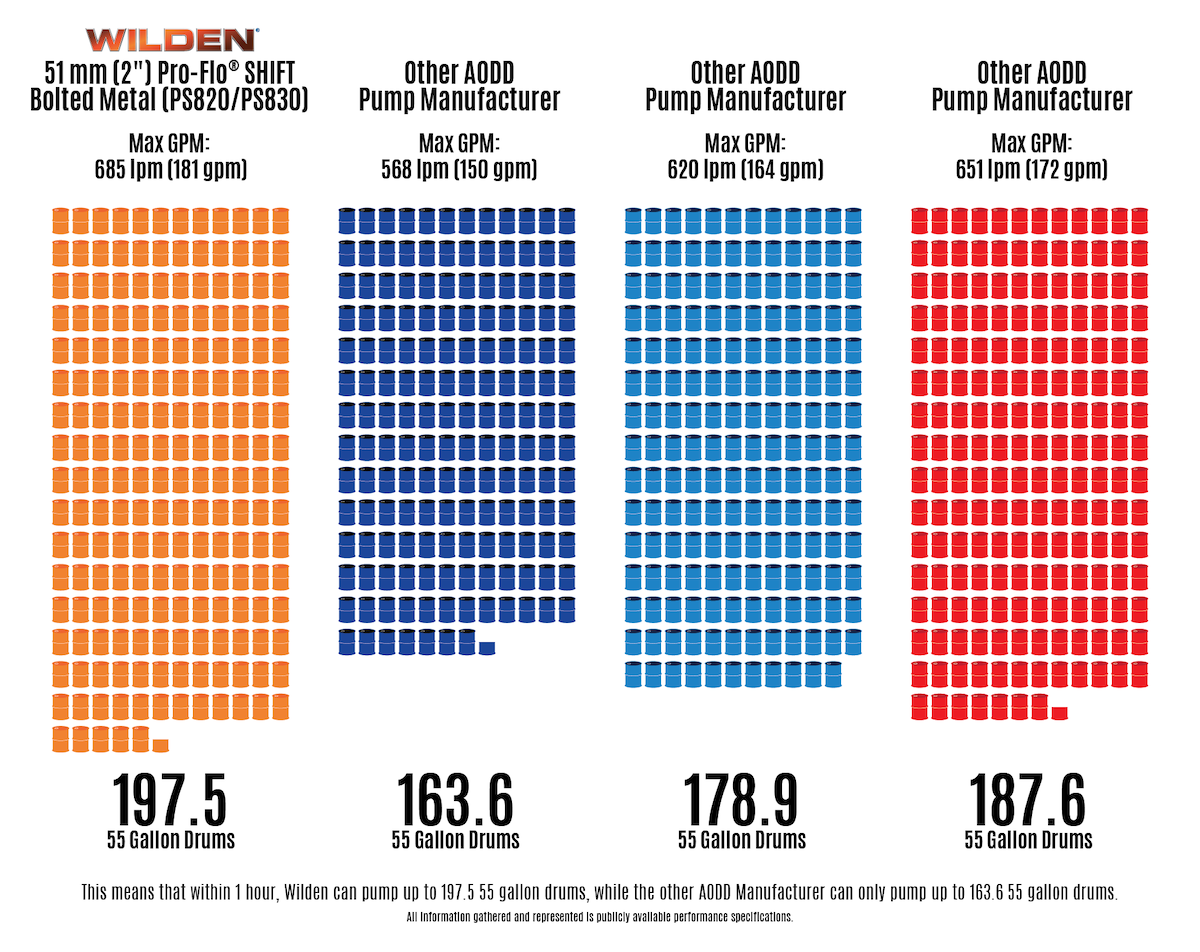
Data provided by PSG, a Dover Company
Next Steps
With a philosophy of simplicity, Wilden produces a more reliable AODD pump than its closest competitors. This accomplished with a lowered cost of ownership with a maximized flow capacity, fewer parts than the competitor, and consistent materials used throughout the design of the pump.
Northwest Pump is offering a deal on Wilden pumps until the end of 2022. Trade in your current AODD pump from any Wilden competitor (ARO, Graco, Murzan, Sandpiper, Versamatic, Yamada, etc), and receive a 15% discount on your new Wilden pump. Alternatively, if you are upgrading your current Wilden pump, you can trade that in as well for a 15% discount as well. To take advantage of this amazing deal, click here to have our team contact you with next steps.
Looking for service on your AODD pump? Northwest Pump offers an in-house pump shop in our Portland branch. Request service for your equipment here.
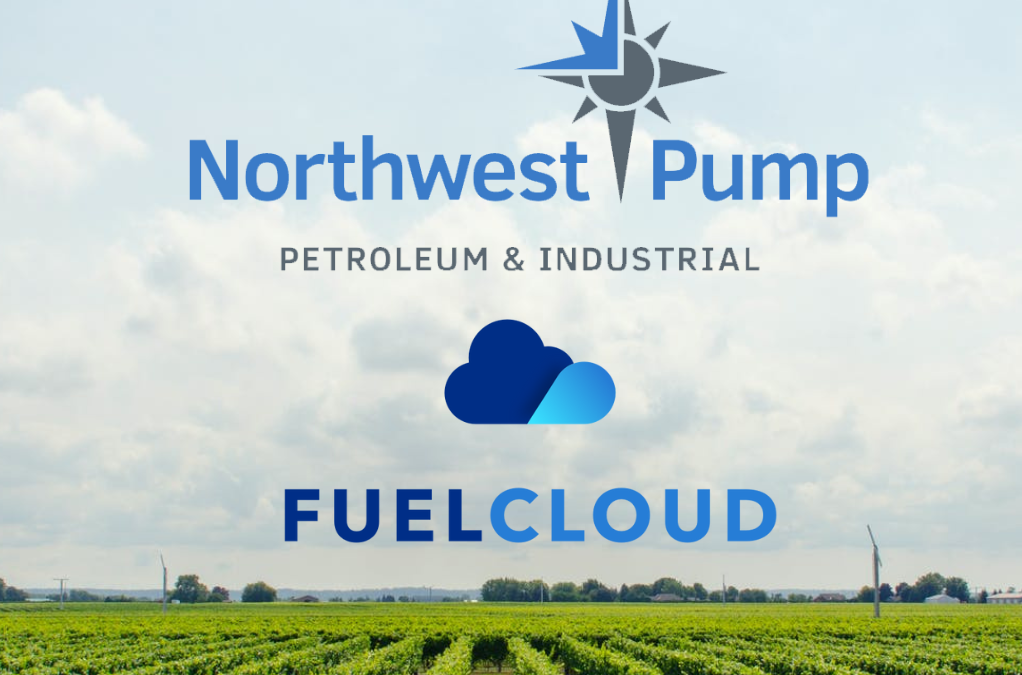
Aug 12, 2022 | Petroleum
FuelCloud is a fuel technology company that builds fuel management systems designed for the future of business. The platform combines flexible, lightweight hardware with powerful cloud-based software that gives managers the data they need to make better decisions about their fuel. FuelCloud is a great option for winemakers looking to save their fuel.

How does FuelCloud benefit winemakers?
Automates tax refunds: FuelCloud automates the completion of federal and state fuel tax refunds for off-road fuel use. California’s state fuel taxes are among the highest in the US — wineries could be recouping thousands of dollars if they’re not already filing tax refunds, or taking the pain out of completing the refunds they do every year.
Decrease fuel slippage: FuelCloud’s hardware is easy to install on any tank, so fuel managers can protect their most remote tanks from theft and detect leaks or inventory discrepancies faster.
Easily manage seasonal fuel access: Do more drivers need fuel access for just a few weeks during harvest? Add, edit, or remove fuel access for drivers and vehicles with a few clicks on FuelCloud’s web portal, available on any internet-connected device. You can even activate or deactivate tanks on a month-by-month basis to get FMS when you need it.

Are you ready for the future of fuel management with FuelCloud?
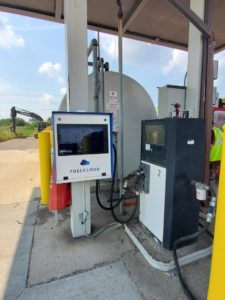
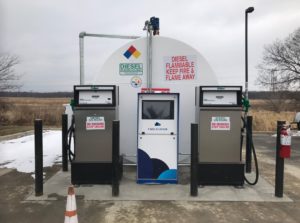
Next Steps
If you are looking for a fuel management system to save fuel for your winery, reach out to our sales team here, email us at sales@nwpump.com or call 1-800-452-PUMP to get started.
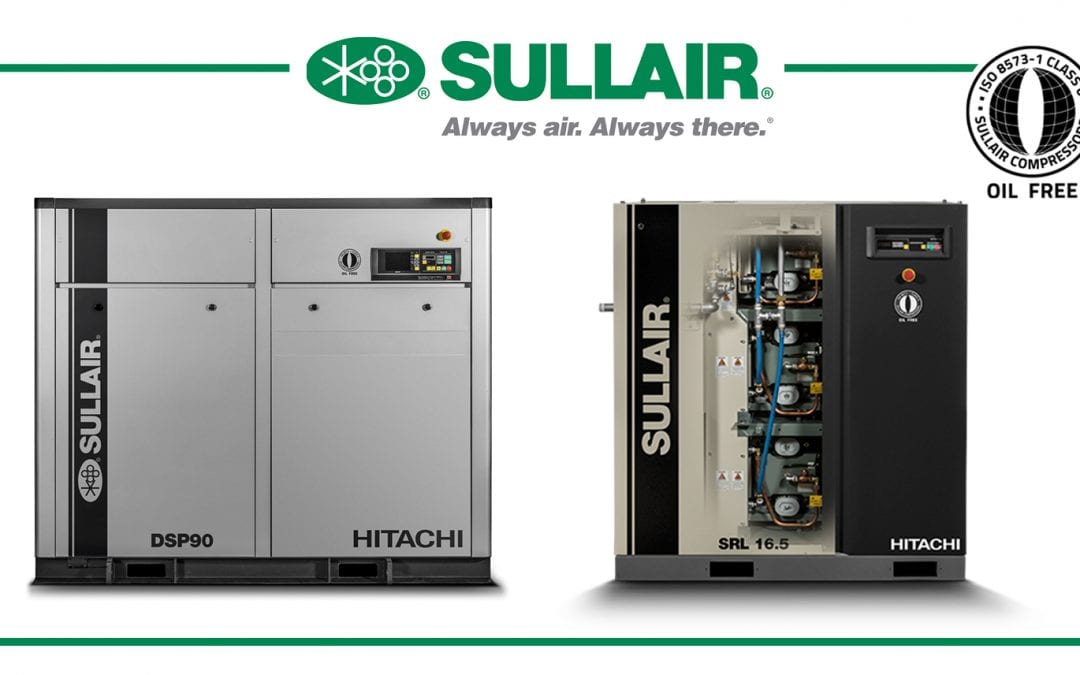
Aug 2, 2022 | Industrial
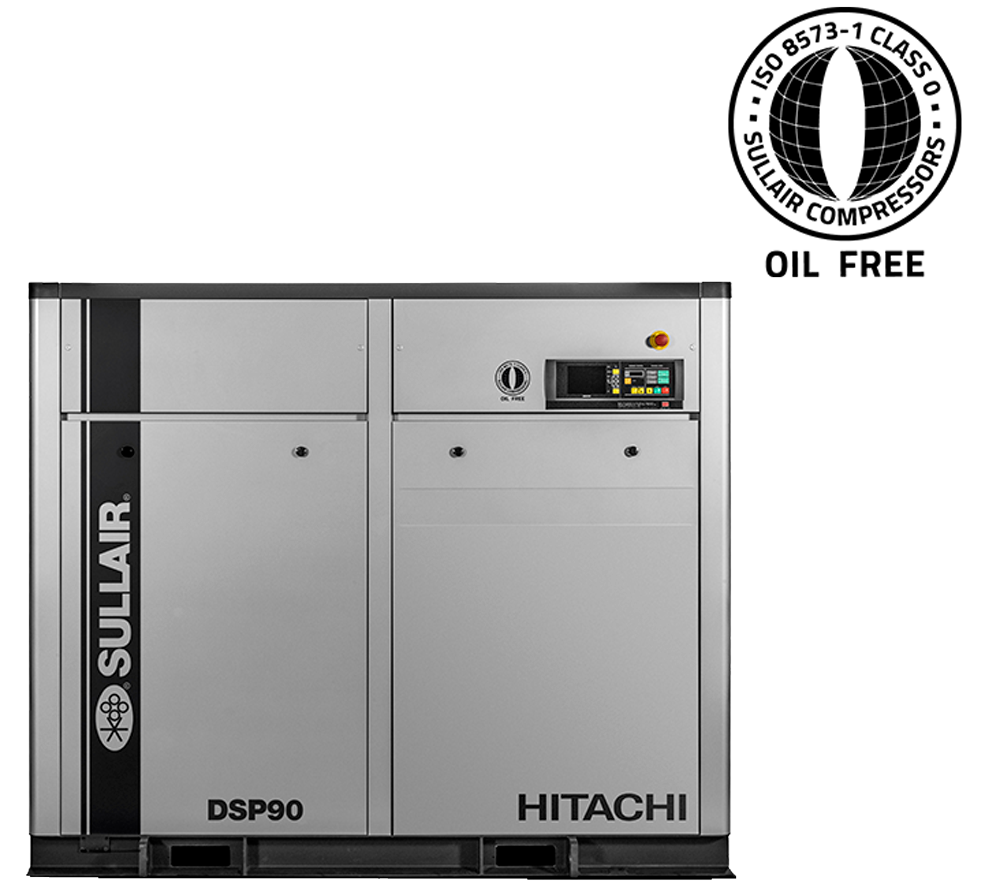 Air compressors are an important piece of equipment for any facility that uses them. However, with the wrong approach, an air compressor can account for half of the cost of annual electricity. There are many different ways to prevent this kind of waste. One way is to consider oil free or an oil less compressor over oil-flooded. What will be better for your situation will vary on your circumstances. Here are five ways that an oil free compressor can be advantageous over an oil-flooded compressor.
Air compressors are an important piece of equipment for any facility that uses them. However, with the wrong approach, an air compressor can account for half of the cost of annual electricity. There are many different ways to prevent this kind of waste. One way is to consider oil free or an oil less compressor over oil-flooded. What will be better for your situation will vary on your circumstances. Here are five ways that an oil free compressor can be advantageous over an oil-flooded compressor.
1. Oil Free Compressors Eliminate Product Contamination
For those with sensitive applications, an oil free compressor is especially beneficial over an oil-flooded compressor. End products and uses will have significantly less oil condensate. Any industries with sanitary requirements, such as Food & Beverage and Pharmaceutical manufacturing, would be better off utilizing oil free compressors for their facilities. This is especially true for Sullair’s oil free DSP series. The DSP series offers ISO Class 0 air, which means it goes beyond the regulations set by ISO, with fewer solid particles per million than Class 1 air. For example, one feature that allows for this is the rotary screws themselves resist toxic contaminates, which could potentially stick to the rotors and reduce the air quality over time.
2. Oil Free Compressors Reduce Maintenance Requirements
Sullair has designed its oil free compressors to be durable and requires less maintenance than other compressors. This is accomplished with patented PTFE-free coated stainless steel rotary screws, patented pre-cooler design, and a capacity control system designed to operate one million cycles per year. Additionally, these rotors do not degrade over time, unlike other rotors.
3. An Oil Free Compressor Reduces the Annual Cost of Ownership
In the same vein as needing less maintenance, Sullair’s oil free compressors cost less per year than other compressors. This is due to a mix of factors. First, is mentioned above, facilities do not need to spend money on repairs or services for their compressors. Second, oil free compressors from Sullair come standard with an oil mister. Since no lubricant is used in the air compression process, the DSP compressor uses much less oil than a lubricated compressor, which means paying less for lubricants through the years.
4. New Compressor Technology Increases Speed Without Increasing Noise
Yes, you read that correctly. More compressed air without the noise. Sullair compressors use Hitachi state-of-the-art motors that are efficient, compact, and consume 30% less power when kept at no load. This is paired with a noise reducing full enclosure and a solid baseplate to keep the compressor as quiet as a dishwasher.
5. Oil Free Compressors Reduces Carbon Emissions
It goes without saying that reducing the amount of oil and other contaminants in compressed air means that the compressor itself is a great choice for those looking to reduce their carbon footprint. Additionally, Sullair has many ways to reduce electricity waste with various attachments and innovations to their products.
Next Steps
Interested in how an oil free compressor can benefit you? Reach out to our sales team here, email us at sales@nwpump.com or call 1-800-452-PUMP to get started. Looking for maintenance on your current compressor equipment? Request service here, or contact us at service@nwpump.com or 1-866-577-2755.
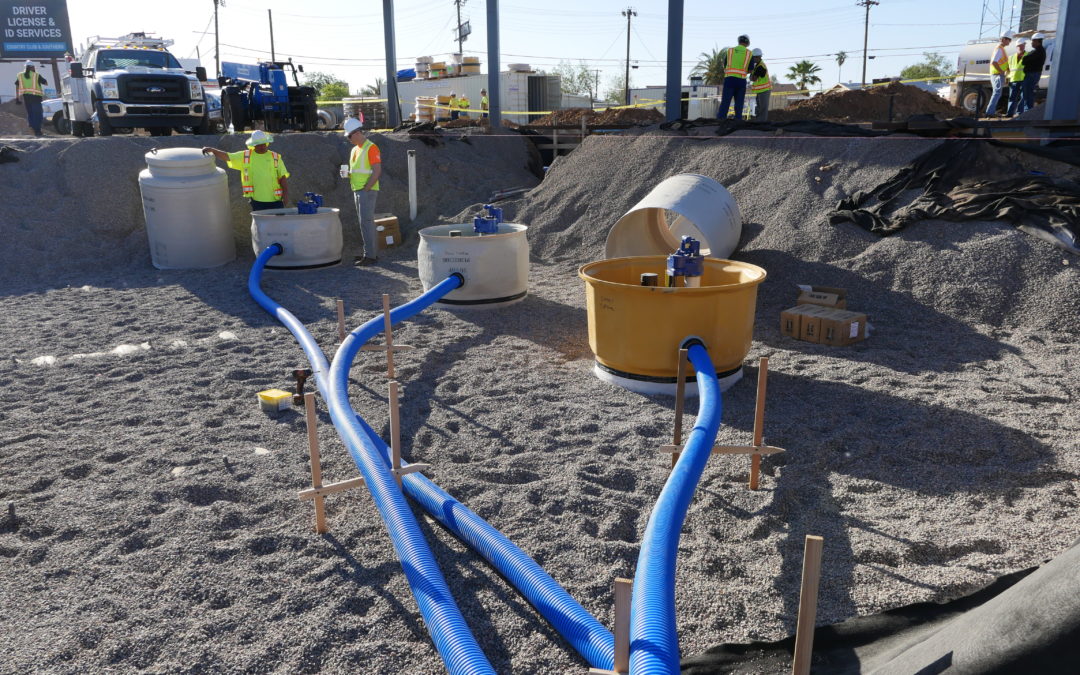
Jul 1, 2022 | Petroleum
FlexWorks, by OPW Retail Fueling, is a completely integrated underground fuel transfer and containment system. Designed to provide the highest level of dispensing performance, installation efficiency, and containment protection. OPW FlexWorks piping consists of highly engineered components that are designed to operate in unison to ensure long-term system integrity and performance. FlexWorks offers a high degree of flexibility to meet virtually any underground piping requirement.
OPW developed FlexWorks Piping in response to customer feedback. You asked and they delivered! The OPW FlexWorks piping is more flexible, lighter, and has reduced memory. Additionally, it can also be replaced without breaking concrete.
What Makes This Pipe Different?
- Eliminates the hassles- installation time and potential leak points of rigid pipe installations.
- Fast and easy installation- results in less installation labor, time, and cost.
- No adhesives- heat assists, curing problems, or electrofusion welding of joints.
- Easy to bend- no special fittings to install in order to make bends.
- Eliminates burdensome cutting, fitting, and cleaning.
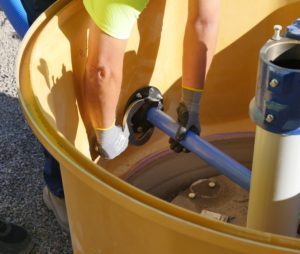
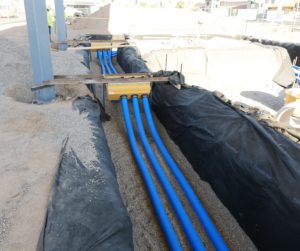
Features & Benefits
- Increased Pipe Flexibility – the force required to bend the pipe has been reduced to facilitate piping layout. This makes installation quicker and easier, especially in cold weather.
- Pipe Weight – has been reduced to facilitate shipping and handling.
- Pipe Memory – inherent pipe memory has been reduced significantly to facilitate the connection of pipes inside sumps.
- Redesigned Profile – enhanced leak detection performance.
- Enhanced Kynar Pipe Liner – fluoropolymer chemical structure makes it dense and permeation resistant.
Next steps
If you are interested in OPW’s FlexWork piping, contact us by emailing sales@nwpump.com or calling us at 1-800-452-PUMP. Click here to find a local branch near you!




 In the time since the trip, our shop has upgraded its tool boxes for increased capacity & ease of use. Those visiting our Portland branch for any will calls should notice the warehouse now starting to make space for upcoming pump assemblies already. As we begin the process of updating the shop, we expect no impacts to repair times.
In the time since the trip, our shop has upgraded its tool boxes for increased capacity & ease of use. Those visiting our Portland branch for any will calls should notice the warehouse now starting to make space for upcoming pump assemblies already. As we begin the process of updating the shop, we expect no impacts to repair times.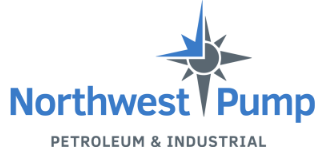

 Facilities use dryers of either style to reduce the moisture in the compressed air. Excess moisture can cause problems for the equipment using the compressed air. Depending on the intended use, this moisture could also damage the end-product, reducing its quality or requiring it to be thrown out entirely.
Facilities use dryers of either style to reduce the moisture in the compressed air. Excess moisture can cause problems for the equipment using the compressed air. Depending on the intended use, this moisture could also damage the end-product, reducing its quality or requiring it to be thrown out entirely. There are several advantages facilities with refrigerated dryers can expect. First, they tend to be a cheaper investment than other kinds of compressed air dryers. Refrigerated dryers also typically have reduced maintenance costs. However, the cost to operate a refrigerated dryer will vary drastically depending on the ambient temperature around the dryer itself.
There are several advantages facilities with refrigerated dryers can expect. First, they tend to be a cheaper investment than other kinds of compressed air dryers. Refrigerated dryers also typically have reduced maintenance costs. However, the cost to operate a refrigerated dryer will vary drastically depending on the ambient temperature around the dryer itself.

























 Air compressors are an important piece of equipment for any facility that uses them. However, with the wrong approach, an air compressor can account for half of the cost of annual electricity. There are many different ways to prevent this kind of waste. One way is to consider
Air compressors are an important piece of equipment for any facility that uses them. However, with the wrong approach, an air compressor can account for half of the cost of annual electricity. There are many different ways to prevent this kind of waste. One way is to consider 

